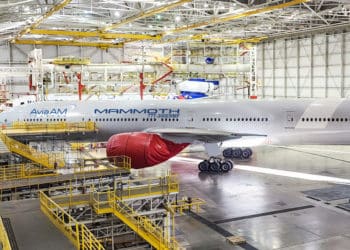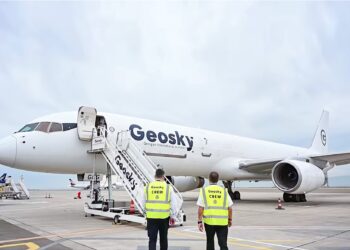The turboprop freighter fleet in 2017 — Part III

In Parts I and II of this analysis we looked at the turboprop freighter fleet in detail, breaking it down by operator, and discussing the changes to the fleet in the last year on a type-by-type basis. But turboprop aircraft are not the only choice for operators looking for small freighters, and today we examine two alternatives, one that has been successful over the last thirty years, but is now losing popularity, and one that has only recently gained acceptance.
Thirty years ago, British Aerospace (BAe) launched a conversion program, under the name Quiet Trader, for its small quad-jet BAe 146. Some thirty of the type were converted as new-builds for TNT, but only fourteen are still in commercial service today – eight operated by ASL Group on behalf of FedEx/TNT in Europe, three operated by JetEx for Qantas Freight in Australia, two operated by Pionair Aviation for TNT in Australia, and one by Star Perú.
BAe successor, BAe Systems, tried to revive the Quiet Trader program in 2007, but was met with little interest, and we assumed no more would be converted. However, two years ago, Australian carrier Skyforce Aviation announced plans to have two units (one QC and one passenger) converted to Quiet Trader configuration and operate them for Virgin Australia, which had gained a contract to support TNT (now FedEx) in Australia. Both have been redelivered, and are now operated by Pionair (the re-branded Skyforce). The BAe 146QT offers a payload of 10.6 tonnes in its -200 variant and 12.1 tonnes in the -300 variant.

The other small jet freighter that has become a success – albeit after a slow start – is the CRJ200F. In 2007, Cascade Aerospace cooperated with Bombardier to develop a small-door conversion program for the CRJ200 and CRJ100. In the ten years since, only nine have been delivered: three 200s to West Atlantic (one of which crashed in 2016), four 100s to Mexico-based MCS Aero Cargo, and two 100s to Estafeta Carga Aérea, also based in Mexico. But the big story for the CRJ is that, in 2013, US-based conversion house Aeronautical Engineers, Inc (AEI), also working with Bombardier, began developing a large-door CRJ200 P-to-F program. The first fruit of that program has just entered service with Gulf & Caribbean Airways, but AEI says it has already booked fifty-four firm orders and commitments.
The obvious question arising from the success of the CRJ200 P-to-F program is whether the CRJ200F will eat into turboprop freighter demand or whether it fills a different niche. AEI had originally expected that most large-door CRJ freighters would find work in the charter market, but it now appears that the majority will be operated in support of the express companies, just as most turboprop freighters are.
Looking ahead, it seems likely that demand for large turboprop freighters will continue to increase at a relatively low single-digit rate annually in the near future. The ATR 72F will likely be the most popular type – IPR’s conversion capacity is already booked through mid-2018 – and it remains to be seen how the Q400 and Q300 will be accepted in the market.
Those interested in learning more about the worldwide demand for freighter aircraft over the next 20-years are invited to check out Air Cargo Management Group’s Freighter Forecast, which for the first time, includes turboprop freighter demand. The report contains analysis of future prospects for fifteen aircraft types that will dominate the future freighter market, including production status, performance characteristics, and freighter conversion program availability.





